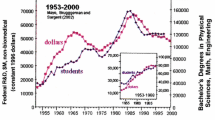Abstract
A recent paper suggested that if Galilean covariance was extended to signals and interactions, the resulting theory would contain such anomalies as would have impelled physicists towards special relativity even without empirical prompts. I analyze this claim. Some so-called anomalies turn out to be errors. Others have classical analogs, which suggests that classical physicists would not have viewed them as anomalous. Still others, finally, remain intact in special relativity, so that they serve as no impetus towards this theory. I conclude that Galilean covariance is insufficient to derive special relativity.





Similar content being viewed by others
Notes
There are other problems, however. In this model, the absorption of such force-particles, and hence the strength of the interaction, depends on surface area rather than mass. These two quantities are independent in classical mechanics and the model still conflicts with the theory it supposedly generalizes.
References
Sela, O., Tamir, B., Dolev, S., Elitzur, A.C.: Can special relativity be derived from Galilean mechanics alone? Found. Phys. 39, 499–509 (2009)
Ignatowski, W.v.: Einige allgemeine Bemerkungen über das Relativitätsprinzip. Phys. Z. 11, 972–976 (1910)
Ignatowski, W.v.: Eine Bemerkung zu meiner Arbeit ‘Einige allgemeine Bemerkungen über das Relativitätsprinzip’. Phys. Z. 12, 779 (1911)
Frank, P., Rothe, H.: The transformation of the space-time coordinates of stationary to moving systems. Ann. Phys. 34, 825–855 (1911)
Weinstock, R.: New approach to special relativity. Am. J. Phys. 33, 640–645 (1965)
Mitvalsky, V.: Special relativity without the postulate of constancy of light. Am. J. Phys. 34, 825 (1966)
Lévy-Leblond, J.M.: One more derivation of the Lorentz transformation. Am. J. Phys. 44, 271–277 (1976)
Srivastava, A.M.: Invariant speed in special relativity. Am. J. Phys. 49, 504–505 (1981)
Mermin, N.D.: Relativity without light. Am. J. Phys. 52, 119–124 (1984)
Sen, A.: How Galileo could have derived the special theory of relativity. Am. J. Phys. 62, 157–162 (1994)
Feigenbaum, M.J.: The theory of relativity - Galileo’s child (2008). http://arxiv.org/abs/0806.1234v1
Pauli, W.: Theory of Relativity. Pergamon, Oxford (1958)
Drory, A.: The many faces of the second postulate of special relativity. Stud. Hist. Phil. Mod. Phys. (2013, submitted)
Turnbull, C.M.: Some observations regarding the experiences and behavior of the BaMbuti pygmies. Am. J. Psychol. 74, 304–308 (1961)
Author information
Authors and Affiliations
Corresponding author
Rights and permissions
About this article
Cite this article
Drory, A. Special Relativity Cannot Be Derived from Galilean Mechanics Alone. Found Phys 43, 665–684 (2013). https://doi.org/10.1007/s10701-013-9709-5
Received:
Accepted:
Published:
Issue Date:
DOI: https://doi.org/10.1007/s10701-013-9709-5




